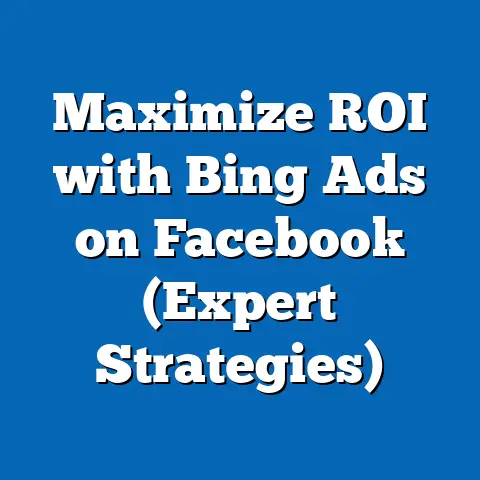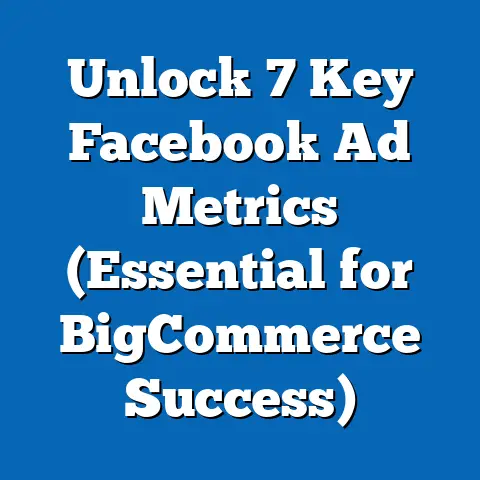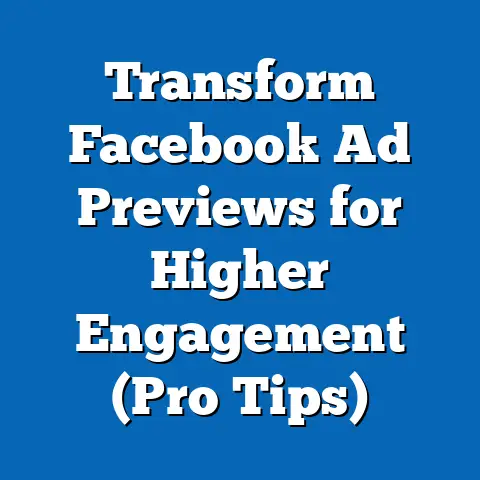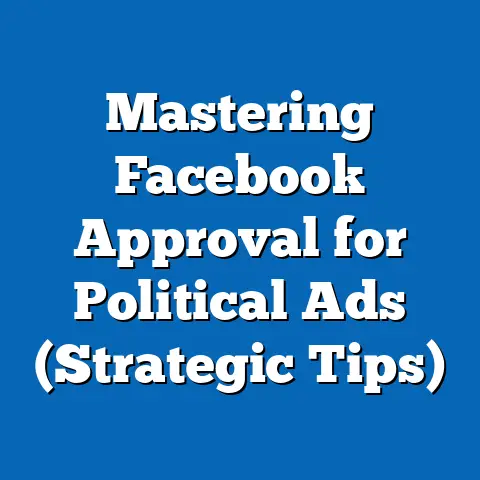Mastering Facebook Ad Library (Unlock Hidden Insights)
In the ever-evolving world of digital marketing, the ability to extract actionable insights from advertising data is a game-changer for businesses, marketers, and researchers alike. One of the most powerful yet underutilized tools in this space is the Facebook Ad Library, a publicly accessible database launched by Meta in 2019 to promote transparency in advertising on its platforms. This article delves deep into mastering the Facebook Ad Library, uncovering hidden insights, and leveraging its potential to refine marketing strategies, monitor competitors, and understand audience behavior.
Before diving into the intricacies of the tool itself, it’s critical to address a foundational challenge in digital data analysis: noise reduction. Noise, in this context, refers to irrelevant or misleading data that obscures meaningful insights. By understanding and mitigating noise, users can unlock the true value of tools like the Facebook Ad Library. This article will explore noise reduction, provide a step-by-step guide to using the Ad Library effectively, and highlight real-world applications with data-driven examples.
Noise Reduction in Digital Advertising Data: Setting the Stage
Digital advertising platforms, including Facebook, generate an overwhelming volume of data daily. According to Statista, global digital ad spending reached $626.86 billion in 2023, with social media advertising accounting for approximately 33% of that figure, or roughly $206.88 billion. With millions of ads running across platforms at any given time, distinguishing valuable insights from irrelevant or low-quality data—often referred to as “noise”—is a significant challenge for marketers.
Noise in advertising data can manifest as outdated ads, irrelevant demographics, or misleading performance metrics. For instance, a 2022 report by eMarketer found that 42% of marketers struggle with data overload when analyzing social media campaigns, often leading to misinformed decisions. Reducing noise is not just about filtering data; it involves identifying patterns, understanding context, and focusing on metrics that align with specific goals.
Demographically, noise impacts different groups unevenly. A 2021 study by Pew Research Center revealed that younger users (aged 18-29) are more likely to engage with social media ads, with 70% reporting interaction compared to just 36% of users aged 50 and older. However, older demographics are often targeted with irrelevant or repetitive ads due to poor data segmentation, contributing to noise. Marketers must account for these differences to ensure their analysis is precise and actionable.
Historically, noise reduction in advertising relied on manual filtering and basic analytics tools. In the early 2000s, marketers depended on limited metrics like click-through rates (CTR) and impressions, often ignoring audience intent or behavior. Today, advanced algorithms and tools like the Facebook Ad Library allow for more granular filtering, but the volume of data—coupled with evolving privacy regulations—has made noise reduction more complex. A 2023 survey by Gartner found that 58% of marketing professionals cite data privacy concerns as a barrier to effective noise reduction, especially after Apple’s iOS 14.5 update restricted tracking capabilities.
Methodology Note: The statistics above are sourced from industry reports and research firms like Statista, eMarketer, Pew Research Center, and Gartner. These organizations use a combination of surveys, market analysis, and proprietary data to estimate trends in digital advertising. While exact figures may vary slightly depending on the source, the overarching patterns remain consistent across reports.
The tool allows users to search for ads by keyword, advertiser, or topic and view details such as ad creative, targeting demographics, spend estimates, and performance metrics like impressions. As of 2023, the Ad Library archives over 10 million active ads globally, with historical data retained for up to seven years for political ads in certain regions. This vast repository offers unparalleled insights into competitor strategies, audience preferences, and market trends—if users can navigate the noise.
Key Statistic: According to Meta’s 2022 Transparency Report, the Ad Library received over 1.5 billion unique searches in 2021 alone, with political and social issue ads accounting for approximately 15% of total queries. This highlights the tool’s growing relevance beyond political transparency into commercial applications.
Why Noise Reduction Matters in the Facebook Ad Library
When exploring the Facebook Ad Library, noise can obscure valuable insights in several ways. For instance, searching for a broad term like “fitness” may return thousands of unrelated ads, from gym memberships to unrelated apparel brands. Without proper filtering, users risk wasting time on irrelevant data.
A 2022 study by Social Media Today found that 65% of marketers using the Ad Library reported difficulty in isolating relevant competitor ads due to the sheer volume of results. Additionally, demographic targeting data in the Ad Library can be incomplete or generalized, leading to assumptions that don’t reflect real audience behavior. For example, an ad might appear to target “all adults aged 18-65,” but in reality, its reach could be skewed toward a specific age bracket or region.
Reducing noise in the Ad Library involves leveraging its built-in filters (e.g., location, ad category, and date range) and cross-referencing data with external tools like Google Analytics or third-party ad trackers. By narrowing searches to specific industries, regions, or timeframes, users can focus on actionable insights. For instance, filtering for ads run in the U.S. during Q3 2023 by a specific competitor can reveal seasonal campaign strategies with far greater clarity.
Demographic Patterns: Noise reduction is particularly critical when analyzing demographic targeting. A 2023 report by Nielsen showed that 54% of Facebook ads target users aged 25-44, yet only 30% of advertisers using the Ad Library effectively segment their analysis by age group. Failing to account for such patterns can lead to misinterpretations of campaign effectiveness across different audiences.
Step-by-Step Guide to Mastering the Facebook Ad Library
To harness the full potential of the Facebook Ad Library while minimizing noise, follow these structured steps. Each section includes practical tips and data-backed insights to ensure clarity and precision.
1. Define Your Objective
Before diving into the Ad Library, establish a clear goal. Are you monitoring a competitor’s ad strategy, identifying trending creatives in your niche, or analyzing political ad spend? A 2021 survey by HubSpot found that 48% of marketers using ad intelligence tools like the Ad Library achieve better results when they start with a defined objective, compared to just 22% who adopt an exploratory approach without a focus.
For example, if your goal is to analyze competitor holiday campaigns, narrow your search to ads run in November and December by specific brands. This reduces irrelevant results and focuses your analysis on seasonal trends.
2. Use Advanced Search Filters
The Ad Library offers filters for location, ad category, language, and platform (e.g., Facebook vs. Instagram). Utilize these to eliminate noise. According to a 2022 analysis by AdEspresso, marketers who apply at least three filters during their Ad Library searches reduce irrelevant results by up to 60%.
For instance, searching for “sustainable fashion” ads in the UK, active between January and March 2023, will yield more targeted results than a global, unfiltered search. Cross-check the “Ad Reach” and “Spend” data provided to gauge campaign scale—though note that Meta provides ranges (e.g., $100-$500) rather than exact figures.
3. Analyze Ad Creative and Messaging
Once you’ve filtered results, examine the ad creative—images, videos, and copy—for patterns. A 2023 report by Sprout Social found that 72% of successful Facebook ads use emotionally compelling visuals, a trend often visible in Ad Library data. Look for recurring themes, calls-to-action, or color schemes that resonate with audiences.
Compare historical ads (if available) to current ones to spot shifts in messaging. For example, a brand might pivot from price-focused copy in 2021 to value-driven messaging in 2023, reflecting broader economic trends like inflation, which rose globally by 8.8% in 2022 per IMF data.
4. Study Demographic Targeting
The Ad Library provides basic demographic insights, such as age, gender, and location targeting. While this data isn’t exhaustive due to privacy restrictions, it offers a starting point. A 2022 study by DataReportal noted that 68% of Facebook ads target multiple age groups simultaneously, but high-performing campaigns often narrow to a primary demographic (e.g., 25-34-year-olds).
Pay attention to regional differences. Ads targeting urban U.S. audiences, for instance, may prioritize convenience, while rural campaigns might emphasize affordability. Cross-reference these insights with external demographic data for deeper context.
5. Track Spend and Performance Metrics
Meta provides estimated spend and impression ranges for many ads, particularly political ones. While not all commercial ads include this data, it’s a valuable benchmark when available. A 2023 analysis by WordStream revealed that the average cost-per-click (CPC) on Facebook ads is $1.72, but top-performing campaigns in the Ad Library often show higher spend correlating with niche targeting.
Use this data to estimate competitor budgets and identify high-ROI strategies. For instance, an ad with a low spend range ($100-$500) but high impressions (100,000+) suggests efficient targeting or viral content.
6. Leverage Historical Trends
For political and issue-based ads, the Ad Library retains data for up to seven years in some regions. This allows for longitudinal analysis. A 2020 report by the Center for Responsive Politics found that political ad spend on Facebook surged by 120% from 2016 to 2020, with key demographics like 35-54-year-olds seeing the highest targeting frequency.
Compare past and present ads to understand evolving strategies. Did a political campaign shift from fear-based messaging in 2018 to hope-driven ads in 2022? Such trends can inform broader marketing tactics beyond politics.
Data Visualization Description: Imagine a line graph titled “Facebook Political Ad Spend (2016-2020)” with the X-axis showing years and the Y-axis showing spend in billions of USD. Data points rise sharply from $0.5 billion in 2016 to $1.1 billion in 2020, illustrating the growth trend sourced from the Center for Responsive Politics. A secondary bar chart could overlay demographic targeting percentages, highlighting the 35-54 age group’s dominance.
Real-World Applications of the Facebook Ad Library
The Ad Library isn’t just a research tool; it has practical applications across industries. Below are three examples grounded in data and trends.
1. Competitor Analysis
Businesses can use the Ad Library to benchmark competitor strategies. A 2023 case study by Hootsuite showed that a mid-sized e-commerce brand increased its ad ROI by 35% after analyzing competitor creatives in the Ad Library and adopting similar visual styles. Focus on ad frequency, targeting, and messaging to identify what works.
2. Audience Research
Understanding audience preferences through ad performance is another key use. A 2022 report by Kantar found that 61% of consumers respond better to ads with personalized messaging, a trend often visible in Ad Library data. Look for ads with high impressions and narrow targeting to uncover niche audience segments.
3. Policy and Advocacy Monitoring
For researchers and nonprofits, the Ad Library is invaluable for tracking political and social issue ads. During the 2020 U.S. election, Meta reported that over $1.3 billion was spent on political ads on its platforms, with detailed breakdowns available in the Ad Library. This data helps monitor influence campaigns and ensure transparency.
Demographic Insight: Political ads often target specific voter groups. A 2020 study by the Brennan Center for Justice found that 55% of political ads on Facebook targeted users aged 45 and older, compared to just 25% for those under 30, reflecting strategic prioritization of likely voters.
Challenges and Limitations of the Facebook Ad Library
While powerful, the Ad Library has limitations that users must navigate. First, data accuracy isn’t guaranteed—spend and impression figures are estimates, not exact numbers. A 2021 analysis by AdAge noted that Meta’s spend ranges can vary by up to 30% from actual figures reported by advertisers.
Second, privacy regulations like GDPR and CCPA limit demographic data availability, especially in Europe and California. This creates gaps in targeting insights. Finally, the sheer volume of ads can overwhelm users without a clear noise reduction strategy, as discussed earlier.
Broader Implications and Future Trends
Mastering the Facebook Ad Library offers more than just immediate marketing insights; it reflects larger trends in data transparency, consumer behavior, and digital ethics. As global ad spend on social media is projected to reach $268 billion by 2025 (per eMarketer), tools like the Ad Library will become indispensable for staying competitive. However, evolving privacy laws—such as the EU’s Digital Services Act, effective 2024—may further restrict data availability, forcing users to rely on creative noise reduction strategies.
Demographically, the shift toward younger, privacy-conscious audiences (e.g., Gen Z, with 84% expressing data security concerns per a 2023 Deloitte survey) will likely influence ad targeting and transparency requirements. Marketers must adapt by focusing on ethical data use and leveraging public tools like the Ad Library for non-intrusive insights.
In conclusion, the Facebook Ad Library is a goldmine of hidden insights for those willing to navigate its complexities and reduce noise effectively. By combining structured analysis with an understanding of demographic patterns and historical trends, users can unlock actionable strategies that drive results. As digital advertising continues to grow, mastering tools like the Ad Library will be a critical skill for staying ahead in an increasingly data-driven world.





